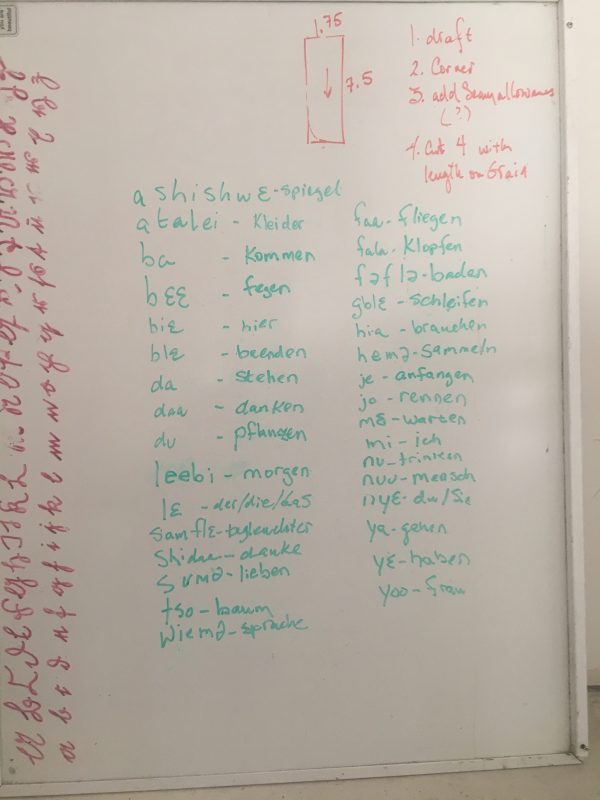When you have people looking to you to provide them with information – regardless of where or how far they are going to take the hobby – you can teach in one of two ways:
You can rest on your laurels and just relay information that you know and they don’t and hope that some of the goodies you have thrown their way stick to the wall…
or
You can put yourself in their position and think about what it means to be an adult student. You can set aside what you know and how wonderful and exciting you and your precious information can be and really get into the feeling of what it means to acquire new information as a beginner would.
Unrelated to sewing and my other occupations, one of the things I like to do every year is take up a new hobby that I haven’t taken up before. It is nice to feel the same frustration and hope as any adult human learning anything new and unrelated to their field. It is a good thing to revisit those feelings of success when you’ve done something that fits in with the canon of commentary about something and it is a good thing to remember the frustration and defeat of something that doesn’t work out on the first try. We as educators forget this very easily.
To this end, I’ve worked my way through sailing and fencing, I’ve fumbled with a violin (an insisted on calling it a fiddle), I’ve worked my way through Cicero’s orations and read Caesar giving honor to various nouns in Latin, and I’ve dabbled in computer repair and electronics. All of these things are outside of what little focus my professional life is/has, and all of them add to who I am as a teacher and what people who come to my workroom get from me.
This year, I am wading my way through learning the fundamentals of Ga, a language spoken by about a million people throughout the world – primarily in Ghana, but with a sizable population of native speakers in the US and Chicago including a couple of close friends. People coming to the workrooms/sewing studios think it is funny/amusing/interesting when they come in and see a dress on a form beside this:

But in learning this, I revisit the frustration that learning something new as an adult brings with it. I revisit the embarrassment in front of an expert (native speaker) when I try to talk to friends using it and get corrected. And for me personally, I feel just the slightest tinge of shame in not being able to do it perfectly like I can make a french seam or sew a straight line with a backstitch by hand (or paint faux marble or malachite or wire a room for electricity, &c).
It brings humility and empathy to my teaching to be just a little kinder and more understanding to the person who shows up at my door wanting to dive into something they have never done that will make their lives richer. I begin to really understand what the lawyer who has, by all standards in the West, a wildly successful life feels when they stumble with those clumsy first few stitches. I begin to feel the shame of the person who runs an entire division of a production studio but can’t remember how to add fractions of 1/8″ and 1/16″ or the actor who has trouble reading the flat diagram of the pattern instructions. All of these people are successful in their own ways and all of them are going to stumble around at first, just like I am now with this.
So this Summer, while I pound away at the keyboard to tell the world about the really wonderful things put out from my workrooms by people who’ve decided to come up and learn to sew and give you guys pithy insights into the sewing world around me, I’ll be listening to self recordings of vocabulary lists to build up my functional understanding of Ga.

Next year it is going to be pottery. There is a pottery studio that opened up near the workrooms and if I can get to making some tile I’ll be a really happy man.
Good teaching starts by not only knowing what you know and they don’t, but from understanding what they feel and you may not. We should all keep this in mind, but for people who convey information it is absolutely critical.